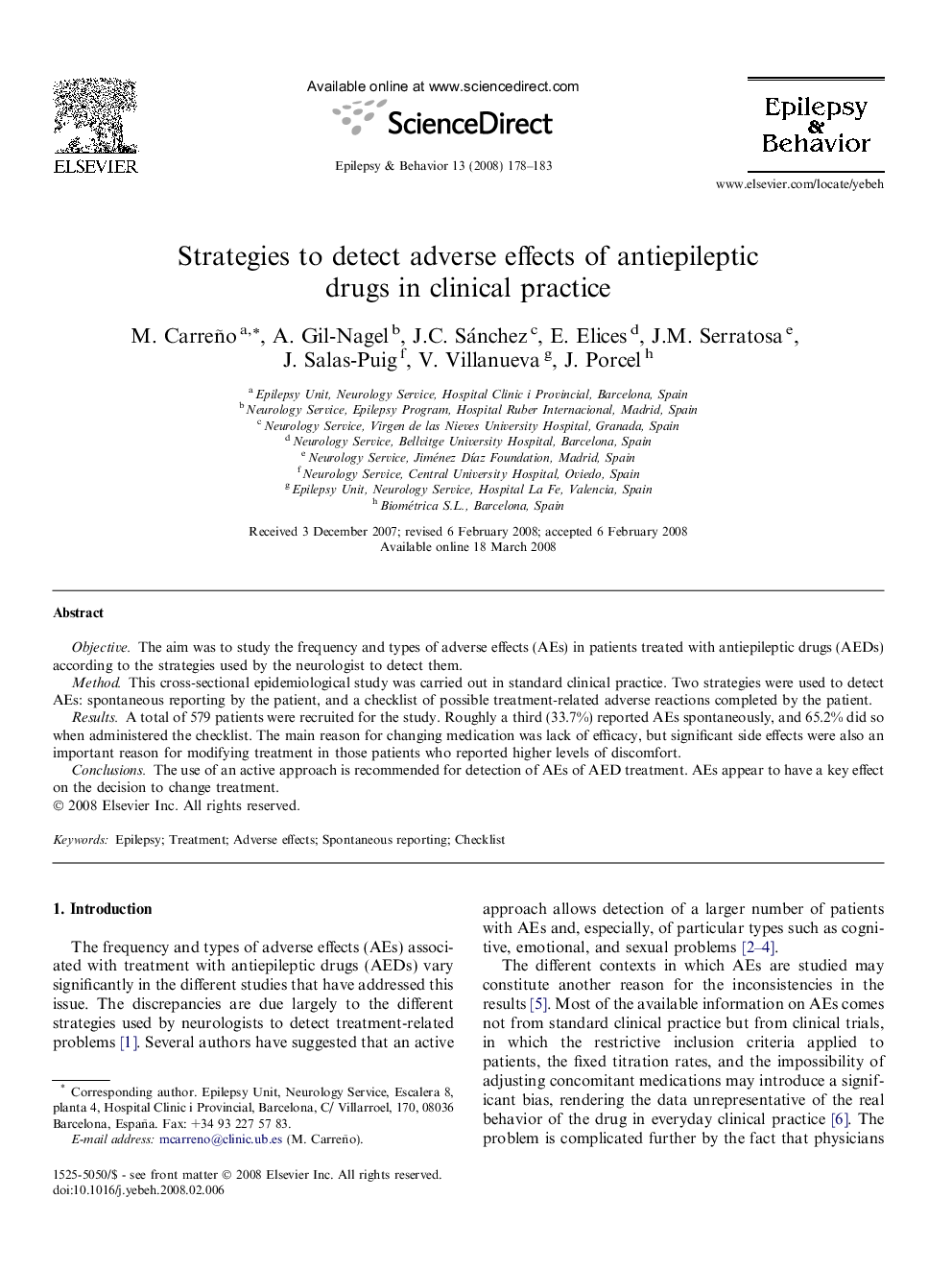| Article ID | Journal | Published Year | Pages | File Type |
|---|---|---|---|---|
| 3050956 | Epilepsy & Behavior | 2008 | 6 Pages |
ObjectiveThe aim was to study the frequency and types of adverse effects (AEs) in patients treated with antiepileptic drugs (AEDs) according to the strategies used by the neurologist to detect them.MethodThis cross-sectional epidemiological study was carried out in standard clinical practice. Two strategies were used to detect AEs: spontaneous reporting by the patient, and a checklist of possible treatment-related adverse reactions completed by the patient.ResultsA total of 579 patients were recruited for the study. Roughly a third (33.7%) reported AEs spontaneously, and 65.2% did so when administered the checklist. The main reason for changing medication was lack of efficacy, but significant side effects were also an important reason for modifying treatment in those patients who reported higher levels of discomfort.ConclusionsThe use of an active approach is recommended for detection of AEs of AED treatment. AEs appear to have a key effect on the decision to change treatment.
